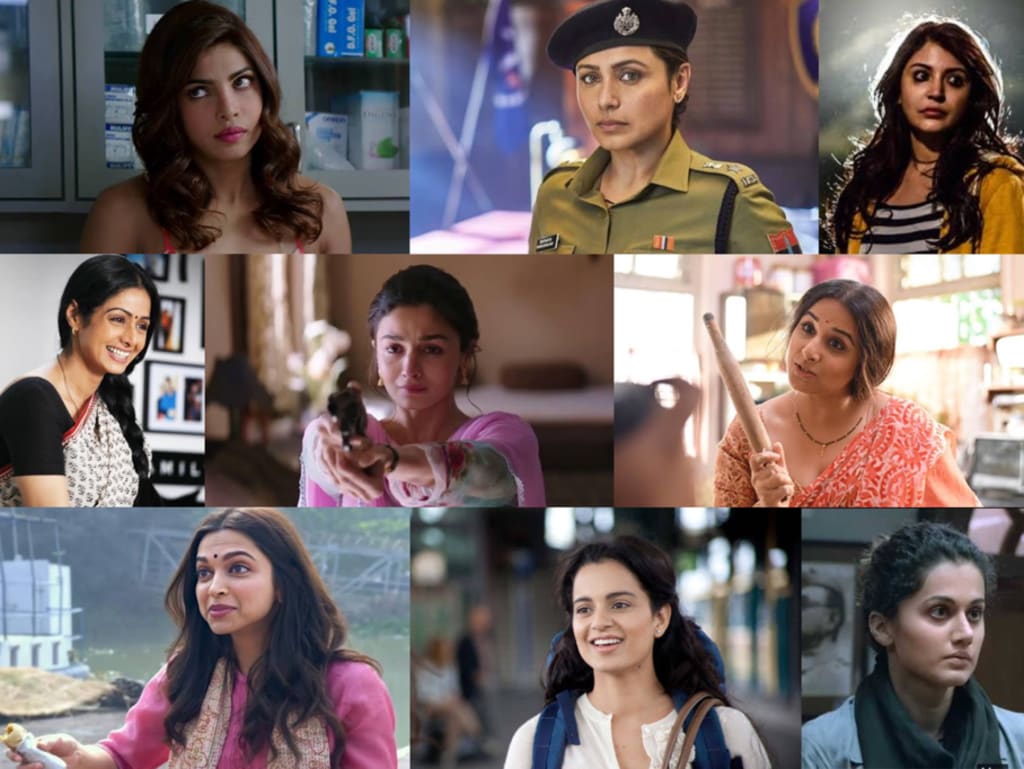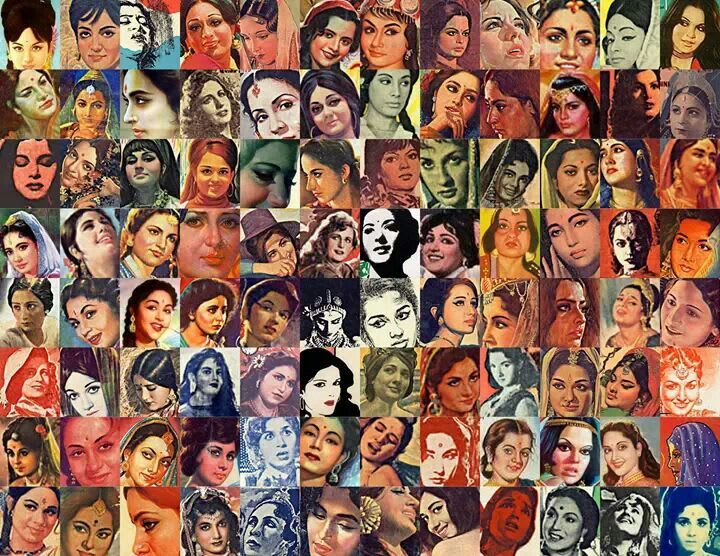Beyond the Glamour: Addressing the Dark Realities of Women and Violence in Cinema
The film industry still promotes misogyny, patriarchy, and gender inequality despite the nation's quick social and economic advancement. In this article, I dive deeper into the normalization of misogyny, patriarchal mindsets and crime against women in various Indian films and how toxic it is to portray this as an acceptable standard.

India is home to the world's largest film industry, sometimes referred to as Hindi cinema or Bollywood. Bollywood produces approximately a thousand films annually, enjoys widespread recognition, and has a sizable global fan base. The thriving film industry regrettably, for a considerable amount of time now, there has been discussion about how women are portrayed in Indian movies. In Indian cinema, objectifying and sexualizing women has always been the norm rather than the exception. The film industry still promotes misogyny, patriarchy, and gender inequality despite the nation's quick social and economic advancement. In this article, I dive deeper into the normalization of misogyny, patriarchal mindsets and crime against women in various Indian films and how toxic it is to portray this as an acceptable standard.
The History of Indian Cinema and The Portrayal of Women
Many people believe that the 1950s was a great period for Indian cinema, particularly in terms of films centered around women. Directors such as Mehboob, Guru Dutt, Bimal Roy, and V. Shantaram created powerful portrayals of Indian women during this time. The black-and-white era of Indian cinema is known for its sensitive and nuanced depiction of female characters. However, there are also films that shamelessly exploit women's issues, particularly rape, for entertainment purposes. These films often use camera angles that cater to a male audience and focus on exposing the female body. The first film to do this was quickly made by Shankar BC & I.S. Johar, taking advantage of the excitement surrounding the 1971 liberation struggle of a neighboring country. The director of the film ZAKHMEE AURAT tried to show support for women's rights by portraying a female James Bond who fights against a group of rapists in India. Some filmmakers in the industry use manipulative tactics to gain fame and fortune, and there have been several films focusing on crimes against women. A candlelight vigil will be held at India Gate, possibly with songs and signs calling for clean air, good governance, and justice.

This event may seem common in Delhi now, but it was not in 2006. The release of the film Rang De Basanti that year sparked discussions about young Indians' disillusionment with the government and their fight for justice. The movie was praised for its portrayal of urban India's struggle for a more fair society. Regional films have been more honest in addressing crimes against women compared to Bollywood. Films like DOR, KAHANI, and PIKU have challenged the stereotype of women being mere decorations and have portrayed them as independent individuals. Mainstream Indian cinema often portrays the super-rich as having insignificant problems that only affect a small portion of the population. However, independent films still depict intelligent women.
The Glorification of Patriarchal and Misogynistic Norms by Bollywood.
The objectification and sexualization of women in Indian cinema are so common that it is hard to find a movie without a provocative scene or a lead female wearing revealing clothes. Women are often portrayed based on their physical attributes and sexuality, reducing them to objects of desire. This perpetuates the belief that a woman's worth is determined by her appearance and her ability to attract men. This representation reinforces stereotypes and limits women's choices and opportunities. Additionally, women are often depicted as weak and reliant on men to rescue them, further reinforcing the idea that women need men to protect them. Filmmakers often claim that their films are about freedom of expression and depicting reality. However, in the case of Bollywood, it is important to acknowledge that it serves as a powerful propaganda tool in India.
Parvathy Thiruvothu, an actor, criticized movies like Telugu Arjun Reddy and its Hindi remake Kabir Singh for glorifying violence against women. She emphasized the distinction between portraying something and glorifying it. Deepali Desai from Breakthrough, an organization working to end violence against women, gave examples of two films - Provoked and Kabir Singh - to illustrate the difference. In Provoked, the abusive behavior is depicted as horrifying, while Kabir Singh portrays it as heroic and entitled, thus glorifying violence. Women are often shown as objects and helpless in movies, reinforcing the belief that they rely on men for help. One example is the item number, where a woman dances seductively in revealing clothes surrounded by men.
This scene is included in films to attract viewers, but it objectifies women and perpetuates the idea that women's bodies are meant for male pleasure. The portrayal of women in Indian movies has real-life consequences, as it not only objectifies women in films but also in society. When women are treated as objects in movies, it teaches young people that it is acceptable to view and treat women in the same way, leading to gender-based violence, harassment, and discrimination. The representation of criminal activities in media and art.ho determines what is acceptable and what is not?
Psychotherapist, author, and community catalyst Scherezade Sanchita Siobhan thinks that these alerts can occasionally have the opposite effect of what is intended or cause a defensive reaction (think #notallmen). Many people consider rape and assault to be more of an individual issue than a social issue resulting from institutionally oppressive structures. Extremely strong warning labels on smoking packets, for instance, have been shown through research to cause cognitive dissonance and more defensive reactions, the speaker claims. When very graphic imagery appears on cigarette packets, smokers sometimes instantly become disengaged and pay no attention. A warning label has less of an effect on a larger group the more it emphasizes an individualistic strategy of blaming and shaming. Engagement that is socially relevant and thoughtful has a higher likelihood of being remembered and producing favourable results.
Popular culture is currently normalizing gender violence without providing an opposing narrative, using the excuse of freedom of expression and realistic portrayals. Desai believes it is important to address not just the presence of violence, but also the justification of violence against women and the glorification of the perpetrators in these scenes. A man of Indian descent in Tasmania was given a restraining order for stalking but claimed that Bollywood movies influenced his behaviour. This raises questions about the responsibility of filmmakers and their freedom of expression
India is very different from other countries in that we worship our stars as gods. These stars have to acknowledge that they have influenced our behaviour and mindset when they go on to play roles that are harmful to society. "In a nation where the majority lives well below the poverty line and where education levels are so low, we cannot afford complete freedom of expression," she continues. "Cinema must lead the way." Freedom of expression is possible, but it must be exercised responsibly said by Ramchandra
Another important question that arises is: Who has the authority to determine what constitutes violence? This question is raised by Aparna Jain, an author and leadership coach who conducts diversity and leadership training sessions in corporate settings. The author asserts that both filmmakers and the CBFC lack the understanding and maturity to comprehend different types of violence, especially regarding gender. They question if emotional abuse, gaslighting, marital rape, and jokes about rape and conversations in locker rooms contribute to a culture of violence against women. The Breakthrough petition aims to address violence against women by considering universal human rights frameworks instead of relying solely on current laws. It focuses on the normalization of misogynistic behaviors and practices in films, such as sexist and rape jokes, which contribute to a culture of violence. Despite objections from the CBFC, filmmakers are still able to depict scenes deemed unacceptable towards women. Siobhan suggests that a group of experts should review movies to identify and address harmful content. She highlights that physical abuse and rape are often accompanied by emotional violence, leading to other forms of violence.
Depiction of crimes as acceptable norms by various film examples
Movies have a negative influence on real-life behavior, as seen in examples like students cheating and robbers attempting heists. People are often influenced by inappropriate and creative behavior portrayed in films, which can have lasting effects on their minds. The glorification of misogyny in movies is concerning, leading to the inclusion of more such content. It is important to avoid using violence as entertainment in films and be mindful of promoting toxic masculine ideas. While violence and patriarchy in media reflect real-life issues, banning or censoring such content would further stigmatize important topics. Films like Darlings and The Great Indian Kitchen address socially relevant topics and challenge traditional gender roles. The portrayal of mundane yet impactful moments, like a woman working in the kitchen, highlights societal inequalities. The movie Gargi showcases the struggles faced by girls and women in India. The film follows a schoolteacher's struggle to clear her father's name in a juvenile rape case, using realistic depictions of violence to shed light on the prevalence of violence against women.
It also highlights how society normalizes oppression and violence towards both men and women. The film "Animal" by director Sandeep Reddy Vanga has stirred controversy for its excessive violence, with critics highlighting its depiction of gore, misogyny, and abuse. This has led to a discussion on the ethical line between artistic expression and social responsibility in portraying violence against women in movies. Despite being a major player in the global film industry, Indian cinema still tends to showcase themes of patriarchy, gender inequality, misogyny, and abuse directed towards women. This reinforces a damaging attitude and makes it appear as though it is okay. Despite some well-received movies, there is still a noticeable gender bias in popular films with disrespectful language towards women. Research on Bollywood movies from 1950 to 2020 indicates a decline in gender bias, but there is still progress to be made compared to other film industries worldwide. It is crucial to distinguish between harmless humor and harmful depictions of women in films. Alarm should be raised when such portrayals normalize harmful ideas.
Conclusion
Filmmaking is a means of self-expression and this right is safeguarded by the Indian constitution, only being restricted if it infringes upon public order, decency, morality, or other criteria outlined in the constitution. This debate revolves around the quality of material, artistic intent, and how audiences interpret creative works. It is difficult to categorize creative work into a simple binary, and while some may argue for censoring violence or graphic content, it can be challenging to justify this legally, morally, or artistically. However, audiences are becoming more aware of when such depictions are necessary for the art itself versus when they are used for shock value. The film industry must produce material that questions conventional gender norms and advances gender equality. In this way, they can contribute to the development of a more just and equitable society in which women are respected for who they are rather than just what they look like.






Comments
There are no comments for this story
Be the first to respond and start the conversation.